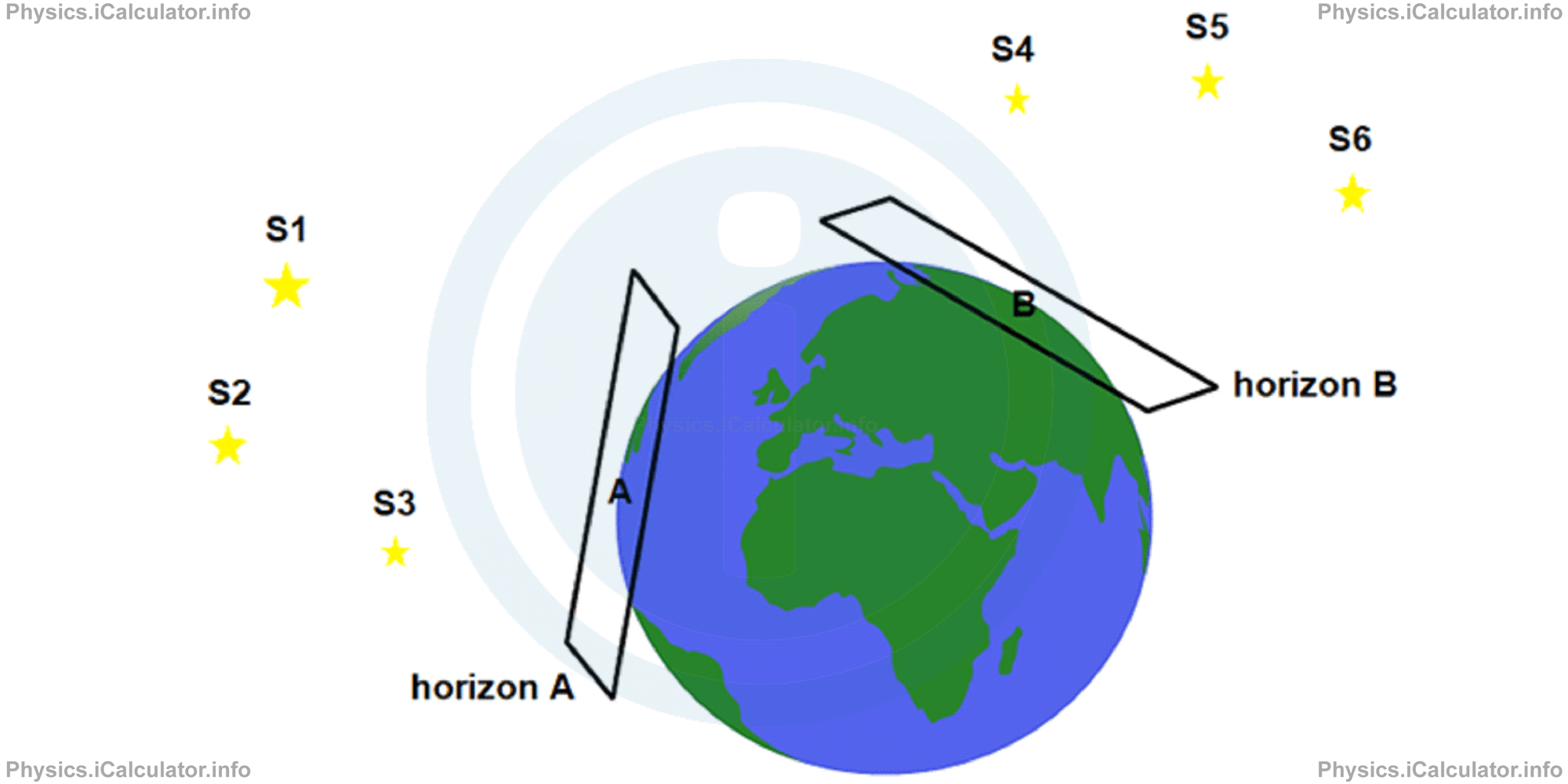Menu
Physics Lesson 22.8.3 - Horizontal Coordinates
Please provide a rating, it takes seconds and helps us to keep this resource free for all to use
Welcome to our Physics lesson on Horizontal Coordinates, this is the third lesson of our suite of physics lessons covering the topic of Orientation in the Sky and Constellations, you can find links to the other lessons within this tutorial and access additional physics learning resources below this lesson.
Horizontal Coordinates
The Earth has a spherical shape and therefore, an observer cannot see what lies below (or beyond) the horizon. By definition, the horizon is the intersection of the plane tangent with Earth surface and the celestial sphere. More precisely, this represents the true or mathematical horizon, while the observer's horizon is more limited because of obsticles like mountains, hills, etc. We can consider the mathematical horizon as the junction line of sky and sea we observe when we are at middle of the ocean.
We say a star rises when it appears above the horizon (in the evening) and it sets when it disappears from the horizon (in the morning). The highest position of a star in the sky is called the zenith. It is at mid-path of the star's trajectory from east to west in the sky. The star makes the same trajectory from west to east as well, but an observer cannot see this movement because it occurs from the other side of the globe. When the star is at mid-path of this invisible trajectory, we say it is in the nadir (the opposite of zenith).
From the points identified above, it is clear that the position of a star can also be determined in reference to the horizon; in this case, we use the horizontal coordinates to express the position of a star.
The horizon is related to the geographic position of the observer, as the tangent planes in two different locations provides different designs of the sky. Look at the figure.

An observer at the location A can only see the stars above the horizon A (s1, s2, s3, etc.), while another observer at the location B can only see the stars above the horizon B (S4, S5, S6, etc.). After a while, both observers will see a different view of the sky due to the rotation of the Earth around its axis. Likewise, the position of the Earth in different seasons changes in respect to the Sun. Hence, again we have a different view of sky in two different dates despite the hour being the same.
You have reached the end of Physics lesson 22.8.3 Horizontal Coordinates. There are 8 lessons in this physics tutorial covering Orientation in the Sky and Constellations, you can access all the lessons from this tutorial below.
More Orientation in the Sky and Constellations Lessons and Learning Resources
Whats next?
Enjoy the "Horizontal Coordinates" physics lesson? People who liked the "Orientation in the Sky and Constellations lesson found the following resources useful:
- Horizontal Coordinates Feedback. Helps other - Leave a rating for this horizontal coordinates (see below)
- Cosmology Physics tutorial: Orientation in the Sky and Constellations. Read the Orientation in the Sky and Constellations physics tutorial and build your physics knowledge of Cosmology
- Cosmology Revision Notes: Orientation in the Sky and Constellations. Print the notes so you can revise the key points covered in the physics tutorial for Orientation in the Sky and Constellations
- Cosmology Practice Questions: Orientation in the Sky and Constellations. Test and improve your knowledge of Orientation in the Sky and Constellations with example questins and answers
- Check your calculations for Cosmology questions with our excellent Cosmology calculators which contain full equations and calculations clearly displayed line by line. See the Cosmology Calculators by iCalculator™ below.
- Continuing learning cosmology - read our next physics tutorial: Expansion of the Universe
Help others Learning Physics just like you
Please provide a rating, it takes seconds and helps us to keep this resource free for all to use
We hope you found this Physics lesson "Orientation in the Sky and Constellations" useful. If you did it would be great if you could spare the time to rate this physics lesson (simply click on the number of stars that match your assessment of this physics learning aide) and/or share on social media, this helps us identify popular tutorials and calculators and expand our free learning resources to support our users around the world have free access to expand their knowledge of physics and other disciplines.